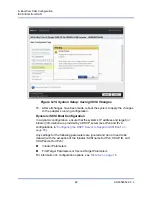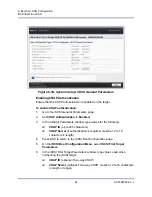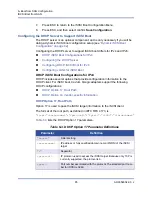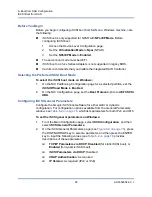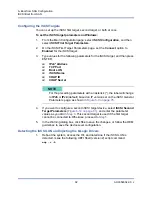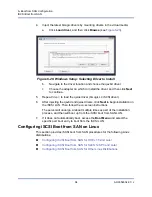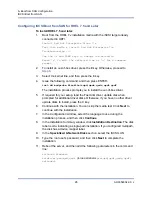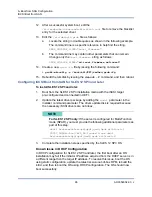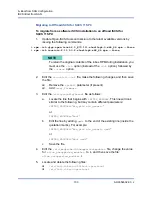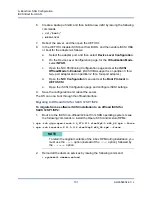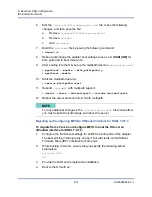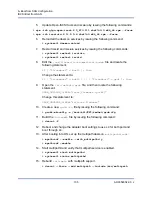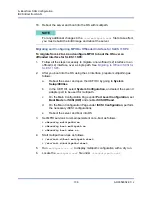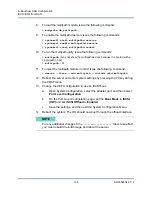
6–Boot from SAN Configuration
iSCSI Boot from SAN
96
AH0054602-00 J
12. After a successful system boot, edit the
/etc/modprobe.d/anaconda-blacklist.conf
file to remove the blacklist
entry for the selected driver.
13. Edit the
/etc/default/grub
file as follows:
a.
Locate the string in double quotes as shown in the following example.
The command line is a specific reference to help find the string.
GRUB_CMDLINE_LINUX="iscsi_firmware"
b.
The command line may contain other parameters that can remain.
Change only the
iscsi_firmware
string as follows:
GRUB_CMDLINE_LINUX="
rd.iscsi.firmware selinux=0
"
14. Create a new
grub.cfg
file by issuing the following command:
#
grub2-mkconfig -o /boot/efi/EFI/redhat/grub.cfg
15. Rebuild the ramdisk by issuing the
dracut -f
command, and then reboot.
Configuring iSCSI Boot from SAN for SLES 12 SP3 and Later
To install SLES 12 SP3 and later:
1.
Boot from the SLES 12 SP3 installation media with the iSCSI target
pre-configured and connected in UEFI.
2.
Update the latest driver package by adding the
dud=1
parameter in the
installer command parameter. The driver update disk is required because
the necessary iSCSI drivers are not inbox.
3.
Complete the installation steps specified by the SLES 12 SP3 OS.
Known Issue in DHCP Configuration
In DHCP configuration for SLES 12 SP3 and later, the first boot after an OS
installation may fail if the initiator IP address acquired from the DHCP server is in
a different range than the target IP address. To resolve this issue, boot the OS
using static configuration, update the latest iscsiuio out-of-box RPM, rebuild the
initrd, and then reboot the OS using DHCP configuration. The OS should now
boot successfully.
NOTE
For SLES 12 SP3 only:
If the server is configured for Multi-Function
mode (NPAR), you must provide the following additional parameters as
part of this step:
dud=1 brokenmodules=qed,qedi,qedf,qede withiscsi=1
[BOOT_IMAGE=/boot/x86_64/loader/linux dud=1
brokenmodules=qed,qedi,qedf,qede withiscsi=1]

